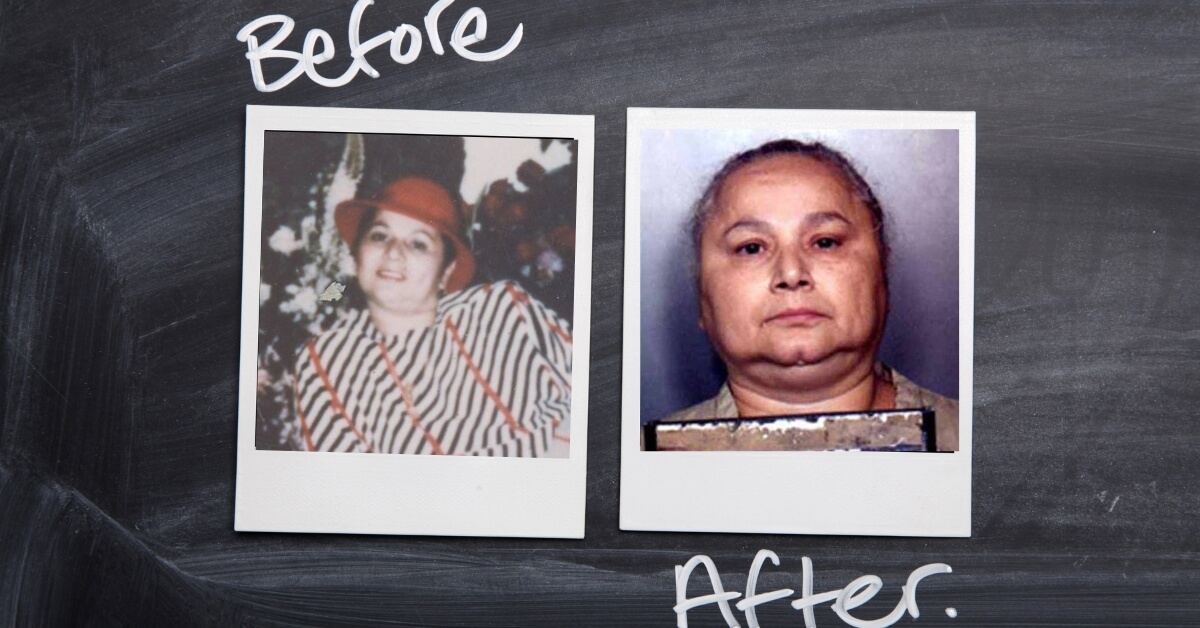Everyone is raving about the Netflix series “Griselda,” which documents the life and crimes of Griselda Blanco, also known as the Cocaine Godmother.
As interest in the show rises, viewers are curious to know how the woman, who was allegedly feared even by Pablo Escobar, became such a notorious drug queen. What was her childhood like?
So, it’s time to peel back the layers of time and explore the roots of Griselda Blanco.
Griselda Blanco, born in Cartagena, Colombia, on February 15, 1943, to Fernando Blanco and Ana Lucia Restrepo, had a tumultuous early life. Abandoned by her father at three, she endured poverty and abuse from her mother, who worked as a s*x worker in Medellin. At 11, Blanco turned to a life of crime, and by 14, she entered prostitution for survival. At around 20, she met her first husband, Carlos Trujillo, and her criminal activities evolved, leading her to become the mastermind behind the infamous Medellin Cartel.
Exploring the Childhood of the Cocaine Godmother Griselda Blanco
Born on February 15, 1943, in the city of Cartagena, Colombia, to Fernando Blanco and Ana Lucia Restrepo, Griselda Blanco’s early life was anything but ordinary.
Blanco’s childhood took a dark turn when, at the tender age of three, she was abandoned by her father and transported to Medellin, the epicenter of Colombia’s cocaine industry.
Raised in a shanty slum, she faced the brutality of her alcoholic prostitute mother, who subjected her to savage beatings.
Blanco endured a tumultuous upbringing in Medellin, marked by poverty and abuse. At just 11, she committed murder, kidnapping, and killing a child for ransom, launching her into a life of crime.
Fleeing her tumultuous home at 14, Blanco turned to prostitution in a bid to survive. Forced onto the streets, she encountered Carlos Trujillo when she was about 20.
He was her first husband and mentor, and they began a journey that led them to New York in the swinging ’60s.
The couple’s union bore three sons—Dixon, Uber, and Osvaldo—all of whom tragically met their end in gang wars.
As Blanco entered her 20s, her criminal repertoire expanded from pickpocketing and forged documents to involvement with small amounts of marijuana.
This transition marked a pivotal point in her life, setting the stage for the innovative criminal mastermind she would become.
Reflecting on her early life, criminal justice expert Steve Palombo noted (via The Independent):
“There she is, her mother being an alleged prostitute, the thieving, her getting involved in phoney passports, pick-pocketing. There was no wholesomeness in her life. You almost have to feel sorry for somebody that never had a real chance.”
In the vibrant landscape of 1960s New York, Blanco’s illicit ventures evolved. Shifting from low-grade cocaine known as basuco, she seized the opportunity as the drug crystallized and demand surged in the late ’60s and ’70s.
Embracing her entrepreneurial spirit, she dabbled in the lingerie industry, ingeniously creating secret compartments in bras and girdles for drug smuggling.
Right from the undergarments, Blanco orchestrated a criminal symphony, importing cocaine by the body load and laying the groundwork for the notorious Medellin Cartel.
Pooling resources and sharing risks with other drug traffickers, Blanco, akin to her contemporary Carlos Lehder, orchestrated the rise of the infamous Medellin Cartel.
This collaboration set the stage for one of history’s most notorious drug lords, Pablo Escobar.
As we delve into the tumultuous journey of Griselda Blanco, we can’t help but marvel at the twists and turns that shaped the woman behind the myth.
From a troubled childhood in Medellin to the heights of the cocaine trade, Blanco’s story is a gripping tale of resilience and ruthlessness.
What role do you think Blanco’s challenging childhood played in shaping her criminal path? In a world shaped by crime and chaos, where do you think Blanco’s legacy stands today?*
Let us know your thoughts in the comments below.
Source: The Independent

